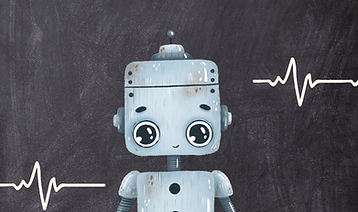
INTRODUCING
SPACE ROBOTICS COURSE
Course Overview
Throughout this course, students will learn fundamental robotic concepts and skills. The curriculum is structured into six distinct modules, each designed to build a comprehensive understanding of robotics. Our primary objective is to equip students with proficiency not only in robotics but also in introducing the autonomous aspects of robotics through Artificial Intelligence. Furthermore, students will explore the latest achievements in space robotics, broadening their knowledge and perspectives in this exciting field.
Introduction to Space Robotics
It will provide an overview of robotics, including definitions, applications, and the importance of robotics in space exploration.
Basics of Space Exploration: Students will learn the history and current status of space exploration, including missions, agencies, and the challenges of space environments.
They will learn unique challenges and conditions of space environments, including micro-gravity, radiation, vacuum, and extreme temperatures.
.png)
Artificial Intelligence in Robotics
We will provide opportunities for hands-on software projects where students can learn how to program in languages such as Python. Projects could include learning Artificial intelligence in autonomous robotics.
_edited.png)
Teamwork and Collaboration
Encourage teamwork and collaboration by assigning group projects and activities where students work together to solve problems and achieve common goals.
Ethical and Social Implications: Discuss ethical considerations related to space exploration and robotics, including issues like privacy, safety, sustainability, and the impact of automation on society.
_edited.jpg)
Robotics Subsystems
Robotics Components: Students will explore the components used in space robots, such as robotic arms, manipulators, mobility systems, and communication systems.
Control Systems and Automation: Students will learn concepts of feedback control, PID controllers, trajectory planning, and path following algorithms used in robotic systems.
Robotics Software/Computer Vision and Programming: Learn how to program robots using languages like Python, C++.
Sensors and Perception: Course will Cover different types of sensors used in robotics, including cameras, LiDAR, infrared sensors, and their applications in navigation, object detection, and mapping.
_edited.jpg)
Case Studies of Chandrayaan-3 and Mars 2020 Rover
Students will learn about Chandrayaan-3 and Mars 2020 Rovers and how they are built for specific missions.
_edited.jpg)
Space Robotics Applications and Career Options
Explore real-world applications of space robotics, including satellite servicing, planetary exploration, space station maintenance, and asteroid mining.
Learn more about career opportunities in this area.
_edited.jpg)
Learning Outcomes
-
Proficiency in programming languages and software tools used in robotics.
-
Ability to design, build, and program robotic systems for specific tasks.
-
Understanding of robotics principles and their applications in various industries, including space exploration.
-
Improved problem-solving skills, teamwork, and collaboration.
-
Critical thinking and creativity in addressing robotics challenges and projects.
